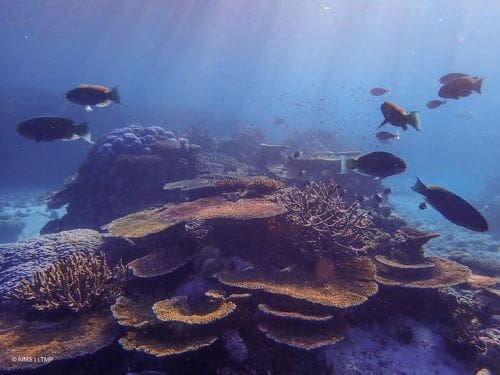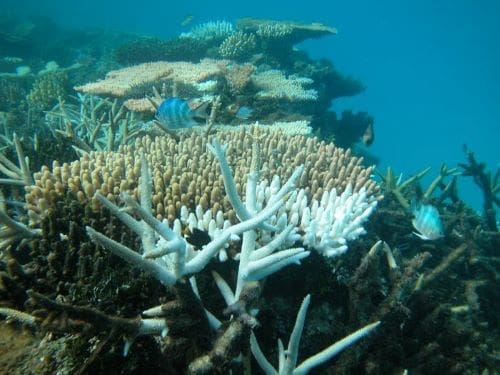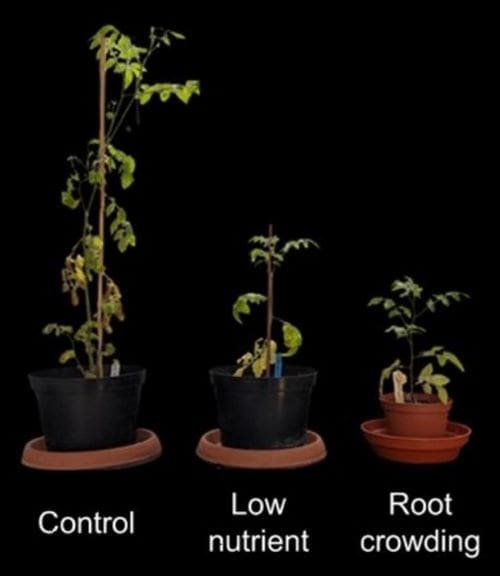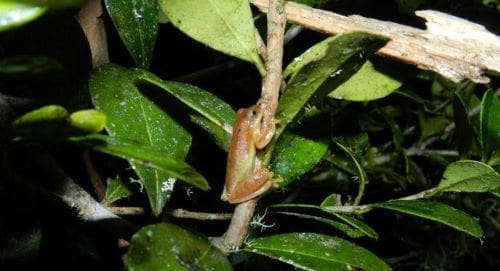Table of Contents
Hiroshima flooding: a case study of well usage and adaptive governance
OMU – Society is often vulnerable to climate disasters, but how humans manage during and after can turn devastation into opportunities for improved resilience.

For instance, private wells are attracting attention as an alternative resource for securing water for daily use and consumption in the event the water supply is cut off after a disaster. However, there are few records on how wells are used in the confusion of disasters, so detailed research is needed to promote the use of emergency wells.
Professor Takahiro Endo of the Graduate School of Sustainable System Sciences at Osaka Metropolitan University conducted a survey on the use of groundwater in Kure, Hiroshima Prefecture, during water supply disruptions due to the 2018 west Japan floods. The study examined actual implementation of adaptive governance, where multiple levels of government, nonprofits, and local individuals cooperate in achieving a desired societal outcome.
It was discovered that Hiroshima Prefecture, in agreement with the water quality inspection organization Hiroshima Environment and Health Association, had provided a free water inspection service for well owners after the water outage.
This promoted the initiative to have the inspected wells open to the public. These collaborative efforts made it possible for wells to become available in a short period of time and supplemented the emergency water supply activities of local governments.
“This is a case of emergency water supply policy that makes use of the economic incentive of free water quality testing, which could be a model policy for other local governments considering the introduction of disaster wells,” stated Professor Endo.
These findings were published in Water International.
Journal Reference:
Takahiro Endo, ‘Adaptive governance and evolution of a groundwater-based resilient city: a case study of Kure City, Japan’, Water International 49, 8 (2024). DOI: 10.1080/02508060.2024.2423451
Article Source:
Press Release/Material by Osaka Metropolitan University (OMU)
Great Barrier Reef fish evidence suggests shifts in major global biodiversity patterns
Lancaster University – Life on the Great Barrier Reef is undergoing big changes in the face of climate change and other human-caused pressures, a new study reveals.
From food security to controlling seaweed and even making sand for beaches, reef fish are a hugely important part of marine ecosystems providing a range of benefits to humans and coral reef ecosystems.
New research from an international team of marine scientists from the UK and Australia and led by researchers at Lancaster University, published in the journal Nature Communications, reveals significant transformations in fish communities on the Great Barrier Reef, the World’s largest coral reef ecosystem.

Their findings show Great Barrier Reef fish communities differ substantially from those of the 1990s, and the pace of change has increased. The findings raise questions around how long-known patterns of how life is spread across the Earth seem to be shifting.
And importantly, researchers discovered that coral diversity rather than the amount of coral on a reef plays the most crucial role in driving the diversity of fish that depend upon it.
The Great Barrier Reef ecosystem faces many pressures with some, such as coral bleaching and cyclones, becoming more intense and frequent in recent decades. Extreme heat stress resulted in six mass coral bleaching events on the Great Barrier Reef from 1998 to 2022, and another recently in 2024 after this study was completed.
This is compounded by other pressures, such as tropical storms, water pollution and outbreaks of crown-of-thorns starfish. These pressures have huge effects on the coral reefs – impacting the amount of coral, the composition of coral assemblages and the diversity of fish that live on coral reefs.
The research team analysed data from the Australian Institute of Marine Science’s (AIMS) Long-Term Monitoring Program, which surveys fish and coral stretching back three decades between 1995 and 2022. The AIMS surveys span more than 1,200 km (from 14°S to 24°S) along the Great Barrier Reef.
One of the most documented patterns of life on Earth is how the number of species (also known as species richness) increases as you get closer to the Equator. This pattern is known as the ‘latitudinal diversity gradient’. A key result from this study is showing how this pattern has undergone significant fluctuations.
Latitudinal patterns of diversity are thought to have been relatively stable over long geological timescales, with these patterns also found in fossil records. The study’s results show that although this pattern remains broadly in line with what we expect for the Great Barrier Reef, there are signs the gradient may be shifting as a result of the increasing pressures.
In the northernmost parts of the Great Barrier Reef, which are closest to the equator, the number of different fish species, in particular species of omnivores, plankton feeders and herbivores, have reduced. In contrast, these trophic groups increased in the southernmost sectors of the Great Barrier Reef, raising questions about other potential consequences on the functioning of this ecosystem.
In the southern part of the Great Barrier Reef, reef fish species richness has experienced big fluctuations – flipping from periods with high numbers of different species, and periods where that richness has been very low.
But the researchers not only show how the number of fish species has changed, they also looked at how the composition of fish communities has changed. They found that fish communities have continuously changed as fish species replace others particularly in response to disturbances. And as disturbances become more common so too do these changes in fish communities.

Javier González-Barrios, lead author of the study and PhD researcher at Lancaster University, said: “Our findings show how long-term and persistent changes are occurring in the biodiversity of the Great Barrier Reef with increasing disturbance from factors such as climate change. We reveal that the fish communities that make their home on the Great Barrier Reef have changed substantially from the beginning of monitoring in the 1990s, both in the number of species and their composition, and continue to change as pressures on the reef system increase.
“We have seen changes in the number and composition of fish species throughout the reef system as well as species turnover – when one species replaces another – are accelerating in recent years, without any sign of stabilisation.
“These changes provide valuable insights into classic geographic patterns, such as the latitudinal diversity gradient, and opens questions as to whether these patterns are decoupling from their original underlying drivers.”
Another key finding from the study is that changes to the composition of coral species is a better predictor of altered fish patterns than simply the percentage cover of hard corals – a widely-used metric to evaluate coral reef condition.
“The Great Barrier Reef has undergone major fluctuations, with hard coral cover on many reefs declining and then recovering in response to large disturbances,” said Dr Mike Emslie of AIMS. “However, just looking at coral cover can mask the underlying changes in the composition of coral species. Corals build the three-dimensional habitat structure that support other organisms such as fish, and the diversity of corals present can greatly influence the extent of that 3-D structure. The recovery of some corals might not provide the same level of habitat complexity resulting in changes to the fish communities that rely on that complexity.
“Our study shows that changes in fish diversity on the Great Barrier Reef were strongly correlated with shifts in coral composition, and to a lesser extent with fluctuations in coral cover, highlighting the vital importance of a diverse coral assemblage for reef fish communities.”
Professor Nick Graham, of Lancaster University said: “Reef fish are important to a range of ecosystem processes, such as controlling seaweed so it doesn’t overgrow and take over areas of the seabed, to producing the sand we sunbathe on in tropical locations. Reef fish are also important to fisheries and are a vital source of food for millions of people.
“With disturbances becoming more frequent and severe, the patterns in fish diversity and abundance we have come to expect are changing, and this will alter the benefits the fish provide for the ecosystem and for people. It’s important that we improve our understanding of how patterns of biodiversity are changing on coral reefs, and the ecological and social implications of this change.”
The paper’s authors are Javier González-Barrios, Sally Keith and Nick Graham of Lancaster University, Michael Emslie and Daniela Ceccarelli of AIMS, and Gareth Williams of Bangor University.
The Australian Institute of Marine Science (AIMS) is an Australian government science agency and provides funding for the Long-Term Monitoring Program. Javier González-Barrios was funded by a Natural Environment Research Council (NERC) studentship with the Envision Doctoral Training Centre.
Journal Reference:
González-Barrios, F.J., Keith, S.A., Emslie, M.J. et al. ‘Emergent patterns of reef fish diversity correlate with coral assemblage shifts along the Great Barrier Reef’, Nature Communications 16, 303 (2025). DOI: 10.1038/s41467-024-55128-7
Article Source:
Press Release/Material by Lancaster University
Scientists investigate what makes some plant species ‘ripe’ for domestication
University of Southampton – Researchers at the University of Southampton have proposed that some wild plant species possess certain attributes which make them more suitable for human cultivation than others.
The scientists, investigating the origins of domesticated plants, say understanding these key genetic and morphological traits may provide important clues about how to develop future, climate change adapted crops.
They suggest that looking at today’s existing undomesticated or underutilised plants could help meet future challenges of developing varieties to resist rising global temperatures and unpredictable weather.

Domesticated plants are those which have been adapted from the wild for human use, often over thousands of years. Around 12-thousand years ago, hunter-gatherer societies began cultivating a wide array of species as more reliable sources of food.
By repeatedly growing seeds from their best plants each season, humans slowly produced more robust crops with improved yields – but only some of the wild species were domesticated and others were abandoned.
The researchers behind this new study, published in the journal Trends in Ecology and Evolution, say useful, hidden properties in some wild species ‘primed’ them for domestication. Their research reviews a host of past literature and evidence to examine why just a minority of these wild plants were domesticated and how modern cultivated varieties differ at a genetic level from their ancestors and present day wild ‘cousins’.
Lead author of the study, Professor Mark Chapman of the University of Southampton, explains: “Tens of thousands of plant species are edible, yet just a few hundred have been domesticated and a mere 15 species provide 90 percent of our calories.
“Hundreds of wild plants were collected during the Neolithic period by humans, but were later abandoned as food sources. We have explored which genetic or physical traits facilitated or constrained the domestication of wild species.”
The team, which also includes scientists from the universities of Oxford, Sheffield and the Royal Botanical Gardens at Kew, identified three main influencing factors which make plants suitable for human cultivation:
- Plasticity – how a plant adapts to its environment. Quick and easily adapting plants with traits that humans favoured are more likely to have been useful for human cultivation.
- Genetic make-up – the simpler, the better. If a small number of genes influence the traits that humans could benefit from, then evolution of the crop morphology is more easily achieved.
- Mutation rate – the faster, the more chance of change. If a plant mutates quickly the process of trial and error to generate bigger seeds or tastier fruits will take less time.
The researchers say that understanding the complex, interrelated factors which lead to certain plant species dominating in domesticated crops can help us understand which wild crops may be successfully adapted to future conditions caused by climate change.
“When plants were first domesticated thousands of year ago, humans only knew the climate and weather conditions they would face at that present time,” explains Professor Chapman. “Now, using sophisticated climate modelling, we can predict how our world will warm and how our weather will change in the decades to come. This gives us the opportunity to think about the ways in which our crops will need to be resistant in the future.”
The scientists conclude that present day wild plants, underutilised crops in local communities, or partially domesticated species may hold key, useful traits which can be controlled through selection and precision breeding. They hope their study will help inform future work to adapt species with the aim of improving our food security in a fast changing world climate.
Journal Reference:
Romero, Anne J. et al. ‘‘Domesticability’: were some species predisposed for domestication?’, Trends in Ecology & Evolution (2025). DOI: 10.1016/j.tree.2024.12.007
Article Source:
Press Release/Material by University of Southampton
Frogs and toads of the Amazon and Atlantic Rainforest will suffer the worst impact of drought combined with warming
FAPESP – An international team of researchers has completed the most comprehensive survey ever of the predicted planet wide effects of drought and global warming on anurans (frogs and toads).
An article reporting their findings is published in the journal Nature Climate Change.
“The Amazon and the Atlantic Rainforest are the biomes with the most anuran species and the highest probability of an increase in both the frequency and intensity or duration of drought events. This will be harmful to the physiology and behavior of countless species. These biomes are among the regions of the planet with the greatest diversity of amphibians. Many species only occur in these places,” said Rafael Bovo, a researcher at the University of California, Riverside (USA), and one of the authors of the article.
The raw data used in the study had never previously been collected by any scientist. Most of the data was assembled by Bovo during research he conducted in Brazil with a scholarship from FAPESP, more precisely for his doctorate at São Paulo State University’s Institute of Biosciences (IB-UNESP) in Rio Claro, and for postdoctoral studies at the University of São Paulo’s Institute of Biosciences (IB-USP).
The research was also part of the Thematic Project ‘Impacts of climate/environmental change on fauna: an integrative approach’, supported by FAPESP and coordinated by Carlos Navas, full professor at IB-USP and penultimate author of the article.

The findings include a prediction that between 6.6% and 33.6% of anuran habitats will become arid by the period 2080-2100, depending on the level of greenhouse gas emissions from now on. If greenhouse gas emissions rise moderately and global warming increases by 2 °C, 15.4% of these habitats will be exposed to more drought events.
If greenhouse gas emissions reach a high level by the end of this century and global warming increases by 4 °C, more than a third (36%) of these habitats will suffer from drought events that may be devastating for anurans, which are particularly sensitive to water loss owing to their thin, highly permeable skin.
In practice, in a future world 4 °C warmer, anurans in the Amazon, Central America, Chile, the northern U.S. and the European Mediterranean are predicted to experience drought events lasting an additional four months per year.
Even 2 °C warming, however, will increase the duration of droughts by one to four consecutive months per year in most of the Americas, Europe, southern and central Africa, and southern Australia.
Combination
The researchers concluded that frogs and toads may experience twice the rate of water loss in some arid regions and that the combination of drier weather and higher temperatures may double the reduction in anuran activity compared with the expected impact of warming alone.
“In a hotter and drier environment than the one they’ve adapted to in their evolutionary history, anurans will have to spend less time outside their shelters to avoid the heat and dryness, both of which accelerate evaporative water loss. As a result, they will also have to spend less time foraging and finding mates for reproduction, which will directly affect the viability of these populations,” Bovo said.
Biophysical simulations performed by the researchers showed, for example, that anurans will spend less time in activity in tropical regions of the planet, including the Amazon and part of the Atlantic Rainforest biome, under all climate scenarios throughout the year. While warming alone and drought alone will decrease activity hours by 3.4% and 21.7% respectively, the combination of warming and drought will decrease activity hours by 26%.
Besides the data collected in the field and in the lab by Bovo, the survey also gleaned and standardized information from the scientific literature. The process lasted about three years.
The resulting database comprises both planetwide climate forecasts for the end of the century and information on the natural history of 6,416 species listed as “threatened” by the International Union for Conservation (IUCN). The variables analyzed by the researchers included geographical distribution, use of microhabitats, and presence of behavioral and physiological strategies to avoid water loss, such as posture, burrowing to shelter from environmental pressure, secretion, or waterproofing via cutaneous surface fluid or lipids, for example.
In a previous article, Bovo and collaborators showed how thermal breadth in frogs and toads may vary even within species, and how this can influence predictions of the impact of climate change based solely on thermal tolerance.
The researchers are now focusing on understanding whether some species have sufficient plasticity to adjust relatively quickly to a drier environment and whether they are able to adapt over an evolutionary scale of thousands of years. The long-term goal is to refine the models on which predictions of local or regional species extinction are based, enabling their use as benchmarks for other animal groups that are sensitive to warming and water scarcity.
“There are only two possible solutions for anurans to avoid extinction: migration or adaptation. We want to develop a deeper understanding of which species still have the ability to adjust their physiology and behavior, in a single lifetime or over several generations, so as to survive these profound changes, and to help predict the magnitude of the biodiversity that will remain at the end of the century,” Bovo said.
Journal Reference:
Wu, N.C., Bovo, R.P., Enriquez-Urzelai, U. et al. ‘Global exposure risk of frogs to increasing environmental dryness’, Nature Climate Change 14, 1314–1322 (2024). DOI: 10.1038/s41558-024-02167-z
Article Source:
Press Release/Material by Fundação de Amparo à Pesquisa do Estado de São Paulo (FAPESP)
Featured image credit: Gerd Altmann | Pixabay




